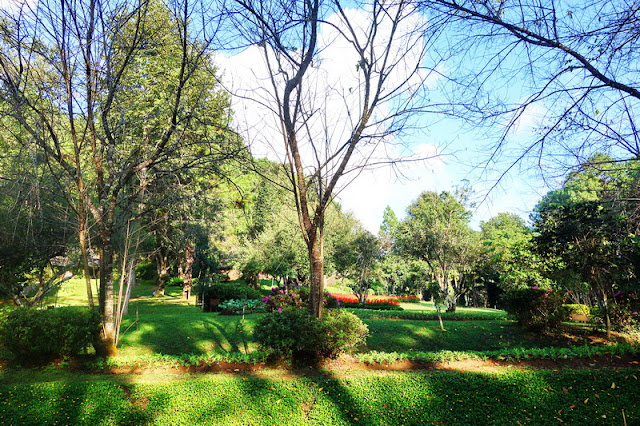Pang Ung Why Everyone Is Talking About This Hidden Gem in Mae Hong Son
Let’s dive into why Pang Ung is the ultimate nature escape and why you absolutely need to experience it for yourself!
A Place Straight Out of a Dream
Hey there, fellow traveler! Have you ever stumbled upon a place so breathtaking that you can hardly believe it exists? That’s exactly what Pang Ung is—Thailand’s own little slice of heaven. Tucked away in the Mae Hong Son Province, this dreamy spot is often called the "Switzerland of Thailand"—and for good reason! Imagine waking up to mist rolling over a glassy lake, surrounded by towering pine trees, and breathing in the fresh, crisp mountain air. Sounds perfect, right?
What Makes Pang Ung So Special?
So, what’s all the hype about? Well, let me paint a picture for you. The highlight here is the misty mornings, where the lake looks like something out of a fairytale. As you take in the view, you’ll notice black and white swans gliding effortlessly across the water—these elegant birds were a gift from Her Majesty Queen Sirikit, making them even more special.
The Ultimate Chill Experience: Bamboo Rafting
Now, if you’re looking for a truly peaceful experience, you HAVE to try bamboo rafting. Picture this: floating across the lake while surrounded by the morning mist, with nothing but the gentle ripples of the water and birds singing in the background. It’s easily one of the most serene things you’ll ever do. Trust me, you don’t want to skip this!
Stay the Night: Camping or Cozy Homestays?
Thinking of staying overnight? Good choice! You can camp by the lake for just 225 THB per night, with an additional 30 THB fee per person for camping space. If tents aren’t your thing, don’t worry—there are plenty of homestays in the area that range from 500–1,500 THB per night. You’ll get to experience warm local hospitality and even try some authentic Shan-style food (which, by the way, is absolutely delicious).
Sleeping Under the Stars
Camping at Pang Oung is an experience like no other. Imagine lying under a sky full of twinkling stars, listening to the peaceful sounds of nature. As the night passes, the temperature drops, wrapping you in a cool, refreshing atmosphere. Then, as dawn approaches, you wake up to a breathtaking sea of mist gently rolling over the lake. It’s a scene so magical, you’ll never want to leave.
Local Life and Delicious Eats
Speaking of food, you can’t visit Pang Oung without indulging in some Shan noodles or a hot cup of Ban Rak Thai tea. These flavors are unique to the region and will warm you up perfectly in the cool mountain air. Plus, the locals here are some of the friendliest people you’ll meet—they love sharing their culture and stories with visitors.
Best Time to Visit? Plan Your Trip Right!
The magic of Pang Ung truly comes alive from November to February. That’s when the temperatures drop, the mist thickens, and the whole place feels even more magical. If you visit in December, you might even catch the Shan New Year Festival, which is a lively celebration full of music, dance, and traditional performances.
Hiking the Phan Nam Yot Trail
For adventure seekers, Pang Ung offers the Phan Nam Yot trekking trail, a perfect way to experience the lush surroundings. This scenic hiking route follows the lake’s edge before leading up to Phan Nam Yot, a viewpoint offering breathtaking panoramas of the reservoir and surrounding hills. The trek is moderate but rewarding, making it an excellent choice for nature lovers looking for a bit of adventure.
Nearby Gems You Can’t Miss
If you’re making the trip, don’t forget to explore nearby spots like Ban Rak Thai, a Yunnanese village known for its tea plantations, and Namtok Pha Suea - Tham Pla National Park, where you can chase waterfalls and soak in stunning natural beauty.
Getting to Pang Ung
The best way to reach Pang Ung is by private vehicle. It’s about two hours from Muang Mae Hong Son, but trust me, the drive is worth it. If you’re on a Mae Hong Son Tour Package, you can add Pang Ung to your itinerary and make it an unforgettable stop along the way.
Time to Pack Your Bags!
So, what are you waiting for? Whether you’re looking for peace and quiet, breathtaking views, or a taste of local culture, Pang Ung has it all. Grab your camera, pack some warm clothes, and get ready for a trip you won’t forget!


























